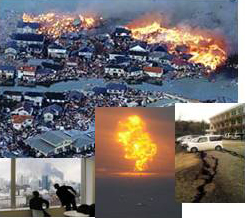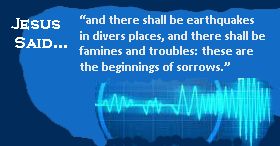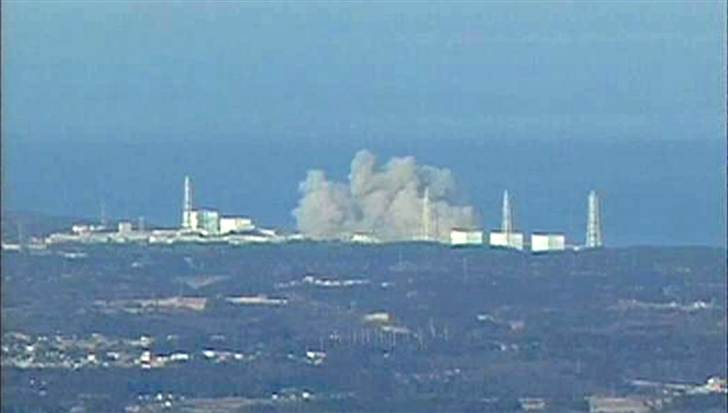

| global economy/ world order/ the nations |
ten kings forming |
U.S. raiser of taxes |
european |
wars rumors of war | egypt king of south | false christs/ vile person |
knowledge |
jews and the temple |
|---|
| Battle in the Church |
revival vs orthodoxy | daniel |
seducing spirits/devil doctrines | ecumenism humanism |
the |
end-times brideship | philadelphia vs laodicea |
|---|
GLOBALIZATION
Interviews/Books/Fulfilled Prophecies/Music/Teachings/Features/Tweet/Blog/Face/our website to Brideship: ThePhildadelphiaFaith.org
Where is this leading for World globalization of Economy?
Japanese Sorrows Will profoundly affect Globalization of Economy
You can bet that the call for increased international controls and regulations for international policing and for systemic changes in the world banking community (already hinted at by the IMF and World Bank) will be ramping up in mahogany boardrooms around the globe. It is likely they are being heard behind closed doors in the European Union, and one suspects in the mind of President Obama and some of his cabinet members, i.e. Mrs. Clinton and Sec. of Treasury and former Fed chairman Tim Geithner, who has already suggested that a change in the IMF international currency, from something other than the U.S. Dollar, might be in order.
The globalization of the economy is bound to find impetus by the crushing events in Japan.
As with all judgments of these last days, all aspects of the judgment falling upon Japan at this hour can be held in consideration for how instrumental they might be for promoting and furthering various revolutionary prophetic paradigms. First reports from the financial suits on U.S. soil downplayed the economic repercussions of the disaster. Even people with no money savvy could see instantly that the professional accountants would need all the help of a high speed laptop to add up the staggering losses that Japan would have to absorb.
As videos streamed in from literally thousands of media devices both private and public, even the unschooled could see simply by subjecting the scene to ‘the eye test’ that the potential economic loss from damaged infrastructure, disrupted markets, ensuing unemployment, business failure, food shortage, power outages, destruction of private property and machines, including homes and crops – all would add up to incalculable financial loss. The nuclear disasters were not yet even fathomed.
The cost of this mega-disaster, especially since it is the first of its kind to a major 21st century economic and industrial nation, will take a long time to tally up. You can bet that the world banking heavy-weights are employing teams of bean counters to sit ‘round the clock at their calculators trying to get a handle on the terms they will give for funding the rebuilding operations.
I am told that AFLAC is a major insurance investor in Japan. Payouts there will be enormous for someone. All the street people in the U.S. might start having an uneasy feeling that someone is about to put a hand in their pockets for another bailout, after all, the bailout revolution was fought and lost here without a whimper from the losers and has since become the established norm for greasing the workings of any local economy like the U.S., and will be an integral part of the world-controlled global economy that is inching its way into place with every passing revolutionary occurrence of prophecy.
The strain on Japan’s economy could not come at a worse time, except for the supernatural strategy of revolution driving it. The economics of the disaster are piling up every hour on this already anemic island victim that annually carries double the debt than its annual GDP (Gross Domestic Product). Only one insignificant African nation has a worse debt/GDP ratio. Officials are admitting to losing shipping revenues in the amount to 3.7 billion a day. Considering Japan is the world’s premier island power, at the crossroads of all water faring caravans of the burgeoning East, that figure is probably higher. Money moguls don’t look at lost business as something they can ever get back. They don’t even like to give their employees a day off, where we might see empty columns in an excel spreadsheet they see red in more ways than one.
That this disaster is of unprecedented magnitude everyone agrees. They do not want to admit that it will precipitate, even demands revolutionary response. But it shall. One revolt already forming, or reforming, is the move against nuclear power. This will place further pressure on the already incendiary issues related to energy and the politico/socio/economic conditions related to oil and the reactions and responses of the West to revolutions in Muslim oil states.
The world, as usual, has been quick to speak for the Japanese government and its people, assuring everyone that they will rebuild, and things will be even better than before. Some are saying this could be a blessing in disguise for Japan because it will boost the economy providing jobs and a resurgence of business and ultimately increased profits and a better life for the Japanese people. That may be the way that wood salesmen and car manufacturers see it, but somehow the math does not work out that way for money lenders and profiteers who operate from the penthouse of the world’s financial towers.
It is not known or easily comprehended how tightly connected the U.S. economy is with Japan’s, but we know after years of negotiation and carefully hammered out trade agreements that it is connected. Japan, being the doorway to the East, acting as a ‘port of call’ for the flow of goods and money between the West and China, gives us a clear idea that Japan’s economy has to be entangled, even inexorably connected, to the U.S economy even at this rudimentary stage of the development of the global economic revolution.
The heavenly induced revolutionary event occurring to the third largest economy in the world is a far reaching prophetic event cutting across revolutionary events in other areas of prophecy. Economists and world leaders have no way to assess the meaning or analysis it properly, but it has more bearing on international politics and the world’s future than they can possible imagine. They must always try to underplay both the precariousness of the situation and the extreme of economic loss. The truth is never their friend only the building of hope and bravado can be tolerated and the extent to which the judgments of the Sendai earthquake reach beyond the troubled shores of Japan into the tangle of the leviathan world economy they will never admit even if they recognize the affects of their fall out.
within first moments they knew it was worst ever
EARTHQUAKE DEVESTATES JAPAN
 (TRU 3-11-11) Within hours of the 8.9 earthquake centered 200 kilometers notrtheast of Tokyo in a city named Sendai, Japan it was known thatthis would tally up, economically, agriculturally, destruction of property, disruption of society and loss of life ever in the history of this ancient island nation. awesome, apocryphal, unimaginable were familiar first words froom eye-witnesses, even from professional journalists and scientists who have experienced many horrifying natural disasters.
(TRU 3-11-11) Within hours of the 8.9 earthquake centered 200 kilometers notrtheast of Tokyo in a city named Sendai, Japan it was known thatthis would tally up, economically, agriculturally, destruction of property, disruption of society and loss of life ever in the history of this ancient island nation. awesome, apocryphal, unimaginable were familiar first words froom eye-witnesses, even from professional journalists and scientists who have experienced many horrifying natural disasters.
Some early details:
|
|---|
Second Day Report- * It was obvious that the official death toll would rise significantly within the next 24 hours. Whole towns were reported missing, one town was reporting almost 10,000 lost. *Reports from financial genuises initially pooh-poohed any effect on the world economy but their reasurrances were losing credibility as the damage to the world's third largest economy began to be apparent. The government was admitting to one tenth of the households of the country (4.4 million) were without power within the first 24 hours. By day two, officials reported that one million households were without water. These things alone were contiributing to the economic losses.
*Iodine pills were being distributed as an antidote to radiation poisoning. Workers at the nuclear facilities effected were reported to be suffering from radiation sickness. One was found dead. Japanese television began running public service ads telling people what to do if they were sick or exposed to radiation. 190 people reported to be hospitalized. *The U.S. Navy was sending a fleet of ships to help with the crisis to aid in medical care, search for survivors and cleanup. Whether they were being deployed to help with a possible meltdown of nuclear facilities was not mentioned. |
|---|
TOKYO - TV footage taken from a military plane showed fires engulfing a large waterfront area in northeastern Japan. Houses and other buildings were ablaze across large swathes of land in Kesennuma city in Miyagi prefecture, near Sendai. The city, with a population of 74,000, has residential, light industry and fishing areas.
Police told the Kyodo news agency that a passenger train with an unknown number of people aboard was missing in one coastal area.
The government ordered thousands of residents near a nuclear power plant in Onahama to evacuate because the plant's system was unable to cool the reactor and pressure inside is rising. The reactor's core remained hot even after a shutdown, and a radiation leak was seen as possible. The plant is 170 miles northeast of Tokyo.
Major damage in broad areas'
Overall, dozens of cities and villages along a 1,300-mile stretch of coastline were shaken by violent tremors that reached as far away as Tokyo, hundreds of miles from the epicenter.
"The earthquake has caused major damage in broad areas in northern Japan," Prime Minister Naoto Kan said at a news conference.
Even for a country used to earthquakes, this one was of horrific proportions because of the tsunami that crashed ashore, swallowing everything in its path as it surged several miles inland before retreating. The apocalyptic images of surging water broadcast by Japanese TV networks resembled scenes from a Hollywood disaster movie.
Large fishing boats and other sea vessels rode high waves into the cities, slamming against overpasses or scraping under them and snapping power lines along the way. Upturned and partially submerged vehicles were seen bobbing in the water. Ships anchored in ports crashed against each other.
Sendai airport was inundated with thick, muddy debris that included cars, trucks, buses and even light planes.
The highways to the worst-hit coastal areas were severely damaged and communications, including telephone lines, were snapped. Train services in northeastern Japan and in Tokyo, which normally serve 10 million people a day, were also suspended, leaving untold numbers stranded in stations or roaming the streets. Tokyo's Narita airport was closed indefinitely.
'Really nerve-wracking'
Tomoko Koga, a 34-year-old translator and interpreter, told msnbc.com she couldn’t see any damage from her house in Chiba, outside of Tokyo, but was watching reports of devastation on the news. “I don’t even know what to say. I feel sorry that I’m safe and OK because there are so many people affected by this disaster.”
Around Sendai, waves of muddy waters flowed over farmland, carrying buildings, some on fire, inland as cars attempted to drive away. Sendai airport was inundated with cars, trucks, buses and thick mud deposited over its runways.
More than 300 houses were washed away in the city of Ofunato alone. Television footage showed mangled debris, uprooted trees, upturned cars and shattered timber littering streets.
The tsunami roared over embankments, washing anything in its path inland before reversing directions and carrying the cars, homes and other debris out to sea. Flames shot from some of the houses, probably because of burst gas pipes.
A large fire erupted at an oil refinery in Ichihara city and burned out of control with 100-foot-high flames whipping into the sky.
Struck at a depth of six miles
The U.S. Geological Survey said the quake hit at 2:46 p.m. local time and was a magnitude 8.9, the biggest earthquake to hit Japan since officials began keeping records in the late 1800s — and the fifth strongest recorded worldwide since 1900.
The quake struck at a depth of six miles, about 45 miles off the eastern coast, the agency said. The area is 240 miles northeast of Tokyo.
The quake was nearly 8,000 times stronger than one that struck New Zealand late last month, devastating the city of Christchurch.
Japan's worst previous quake was in 1923 in Kanto, an 8.3-magnitude temblor that killed 143,000 people, according to USGS. A 7.2-magnitude quake in Kobe city in 1995 killed 6,400 people.
Japan lies on the "Ring of Fire" — an arc of earthquake and volcanic zones stretching around the Pacific where about 90 percent of the world's quakes occur, including the one that triggered the Dec. 26, 2004, Indian Ocean tsunami that killed an estimated 230,000 people in 12 nations. A magnitude-8.8 temblor that shook central Chile last February also generated a tsunami and killed 524 people.
NBC News, msnbc.com staff, Reuters and The Associated Press contributed to this report.
Earthquakes of increasing
Magnitude Shaking the Earth
The incredible increase in earthquake activity during the previous hundred years is one of the most dramatic foreshadowing’s of Jesus's return and the impending judgment of this unrighteous world. Jesus declared, "For nation shall rise against nation, and kingdom against kingdom: and there shall be famines, and pestilences, and earthquakes, in diverse places."
Earthquakes, like all of the Biblical signs of the end, have been on a steady rise throughout our century. In the first 70 years of the Twentieth Century, from 1900 to 1970, there were 34 large documented earthquakes worldwide, a total of one every two years, representing a great increase over the norm of recorded history. Since then, however, the activity has accelerated to an almost unbelievable rate. In the 1970's there were 17 big earthquakes dispersed throughout the globe. According to USGS records, in the 1980’s there were 1084 earthquakes rated at 6+ on the Richter scale of which 101 were 7+ and 4 were 8+.
The total estimated death toll from earthquakes for the decade was 58,880. The 1990’s saw 1,492 magnitude 6+ earthquakes of which 147 were 7+ and 6 were 8+ and the estimated death toll was 114,646. The new century has increased with a total of 1,484 magnitude 6+ quakes with 120 of these registering magnitude 7+ and 12 topping 8+ on the Richter scale. Total fatalities thus far are 463,860 and there are still nine months to go in the decade as of this writing. ... continued
